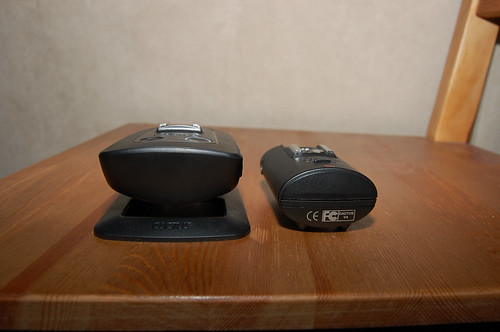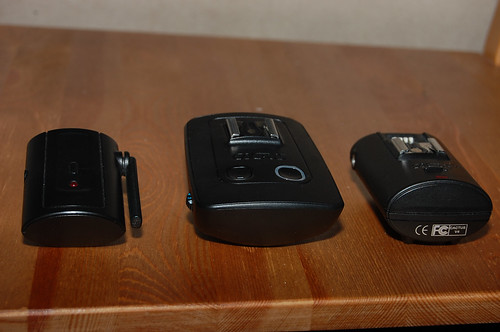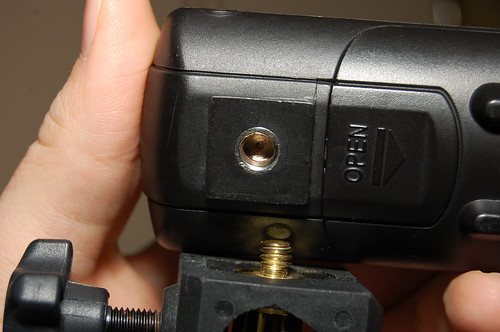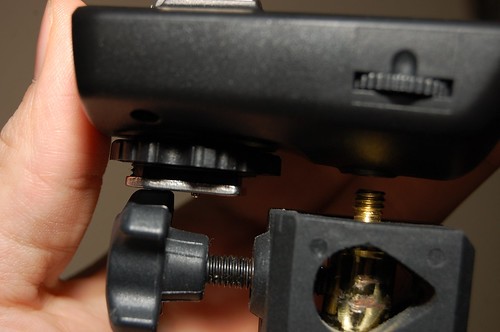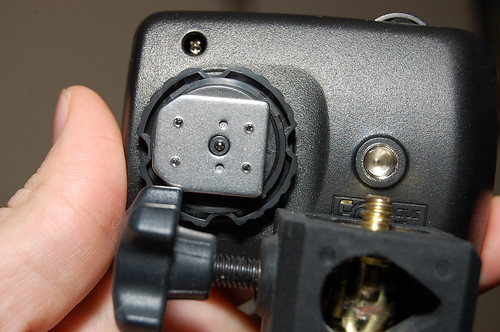So, A few months back I was contacted by Harvest One / Gadget Infinity, the company that manufactures the Cactus line of wireless flash triggers. I have been using their Cactus V4 triggers ever since I started getting into strobist photography, and apparently they liked what they saw because they asked me to be one of the beta testers for their new Cactus V5 triggers! I was pumped.
The following is my review from the point of view of who I actually am as a photographer: an amateur and hobbyist. I will do the following:
1.) Compare them extensively with the Cactus V4
2.) Describe their increased functionality
3.) Describe shooting scenarios where they would be the most effective
4.) Describe their limitations from my point of view
5.) Give you my buying recommendation.
Part 1: New features in the V5
There are some fairly cool new features of the V5, some of which are more useful to me than others, but still, they're worth mentioning.
Transceivers: the new state of the art
Alright, this might not be a brand new idea, but it's still pretty cool. So, instead of having separate transmitter and receiver units, you now get transceivers, units that can either transmit or receive based on what position you have the switch on the side in. All V5s, therefore, look the same. Here's a shot of the contents of the package that was sent to me as a bet tester:
The single biggest benefit of this design is that you can have an on-camera fill light along with off-camera flash due to the presence of the hot-shoe that is on top of every transceiver. What's even cooler is that, for me, as a Nikon D40 owner, I can now have on-camera flash that syncs up to 1/4000 (the D40 has a digital shutter at high speeds - if your camera doesn't, you'll be limited to probably 1/200 or 1/250). That's a nice feature. Here's what water coming out of a faucet looks like at 1/4000:
Problems with the transceiver
Nothing new comes for free, so here's what you have to watch out for: battery life. Apparently when in receiver mode, these bad boys suck down a ton of juice. So if you leave your transceiver in receiver mode over night, chances are you're going to be getting a low battery warning (a flashing red light, which in and of itself is a nice new addition) when you look at your tools the next day. Always set the switch to "off" after use.
New multi-channel triggering:
Alright, this one is a little hard to describe and harder to photograph, so try to follow me here.
First off, there are still 165 channels you can set the V5s to, but instead of fiddling with 4 switches like on the V4, you have a simple and easy to use dial. Now, here's where things get interesting. The numbers on the dial for the first 5 channels are painted on in blue, where as 6-16 are painted on in white. These "blue" channels allow for multi-channel firing.
So, okay, let's say you have 5 transceivers, one on your camera and 4 connected to off-camera flashes. Let's also say that you had a shooting situation set up where sometimes you would want all of the flashes to fire, but sometimes you would want only one flash to fire (imagine shooting a concert or something like that). You could have the 4 off-camera transceivers set to channels 2-5. The on-camera transceiver, when set to any one of those 4 channels, would, of course, only trigger the corresponding transceiver. However, if the on-camera transceiver is set to channel 1, it will trigger all 4 of the transceivers.
So, channels 2-4 (which are 4 of the 5 "blue" channels) can all be triggered by a transceiver transmitting on channel 1. This is kind of cool, if you can think of scenarios in which you would use this functionality. I have maybe had one or two of these shooting scenarios in my life as a photographer, and while this feature would have officially made it easier for me, I don't know if it alone is worth the upgrade for you. If you can immediately think of a ton of common shooting scenarios for you where this would come in handy (I can see wedding photographers using this feature a TON), then I'd snap up as many of V5s as you need immediately.
Range and reliability
Alright, first off, range: the V5s are certified to work up to 100 meters (328) feet away. However, many of the beta testers indicated that they were able to get reliable firing up to 600 feet away! I did not personally test this feature, but I trust the folks who did do the testing. If you need long distance triggering, these are the way to go (especially considering the price difference between these guys and Pocket Wizards, the usual go-to trigger for long-distance triggering).
As far as reliability goes, I have yet to have a single misfire with my V5s. Now, my V4s only rarely misfired, and that generally had more to do with my battery charge than anything hardware related, but still, you will absolutely not have to worry about misfires with the V5s.
Moving on to the hardware features:
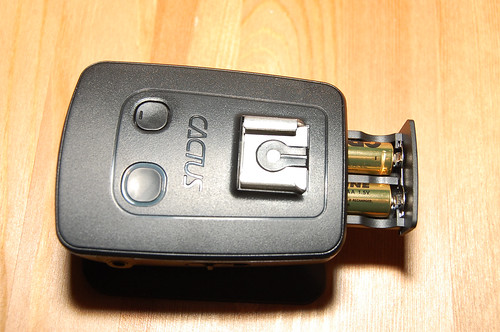
The batteries in the V5 sit inside of this compartment instead of being hidden behind a standard plastic door, like one would see on the bottom of a remote control. To eject the battery compartment, you simply push in on it until you hear a "click" and then the tray ejects. This definitely keeps the batteries in position, especially if you were to accidentally drop your V5. However, this also leaves you with one more part to break. If this plastic drawer does break, there's no way to seat your batteries and have a functional V5. Now, Gadget Infinity has assured the beta testers and I that replacement trays will be on sale on the web site in case such a thing should happen, but given that you have to order these parts from Hong Kong, you're going to be out a crucial component of your lighting equipment for a few weeks before the package arrives to you (assuming you're ordering form the states, YMMV). So, I like the concept in theory, but in practice, I prefer the V4 design because if I broke the plastic door holding the batteries in on a V4, I could just slap on some electrical tape and call it a day.

Part 2: Form Factor, V5 vs V4
V5s are an entirely different form factor when compared to the V4, and for me, this is really worth thinking about.
Size
Frankly, as a small-scale photographer who does a lot of stuff out and about (I have no at-home studio, unless I move a lot of furniture), form factor and ease of use of my triggers are of utmost importance. So, with that said, let's take a look at the Cactus V4 and V5 form factors.
The V5 is on the left (with the shoe it comes with) and the V4 is on the right. You can pretty clearly see that the V5 is much wider and taller than the V4 (the height problem is exaggerated due to the shoe being on, but I think it's still fairly clear in this photo). Now, in practical use, this added bulk doesn't really mean much - the V5 does not look absurdly large sitting on top of your camera or on a tripod - but it does take up a lot of extra space in my camera bag. In the space that I could fit 1 V4 transmitter and 2 V4 receivers, I can fit exactly 2 V5 transceivers. That means rethinking what I can take with me or buying a bigger bag (and I only JUST bought this bag).
Here's a shot of all the V4 hardware with a V5 transceiver:
Ease of Use
Here's my biggest beef with the new form factor, though: they are actually difficult to use on a tripod! The reason is that on the V4, the tripod thread was mounted inside of the male cold-shoe portion of the underside. Since there is no male cold shoe on the transceiver (it's a hot shoe, and you can't exactly drill a threaded hole into a hot shoe), the threading is located toward the front of the transceiver, and the hot shoe juts out, making the whole setup pretty clunky. Here, let me show you:
V4 Receiver - works great:
V5 receiver - clumsy and ineffective!
So, to get the thing mounted on a standard umbrella adapter, you have to raise the spigot part way out of the shaft, causing the entire thing to get off-kilter:
As you can see, this setup causes the receiver to be tilted backward a bit, which when you're shooting into an umbrella results in the flash not shooting directly into the center of the umbrella. On top of that, it's just a pain in the butt to set up in the first place, making these things much more frustrating to use in my sort of day-to-day shooting situations than the V4.
Note: You CAN easily set these guys up on an umbrella adapter if you use the little aluminum cold shoe that comes with most umbrella adapters and just mount the spigot on to that. However, this is one more piece to setup and potentially lose, and it's still not as ideal as the V4 construction.
Party 3: Backwards Compatibility
First and foremost: Cactus V5s are Not native backward compatible with the Cactus V4. You CANNOT trigger a V4 receiver with a V5 transceiver. With that said, it's not difficult to think of some totally non-manufacturer supported ways of getting these two things to work together, especially considering that your on-camera V5 transceiver has an active hot shoe on the top of it, and your V4 transmitter just needs a simple signal from a hot shoe to fire. The following shot was taken in this unsupported method (note: again, the Gadget Infinity / Harvest One does NOT support this usage, but it seems to work all the time, every time, with no problems):
Part 4: Pricing and Conclusions
The pricing has been recently made publicly available, so I'll go ahead and mention it here:
2 V5 transceiver package: $59.95 US
1 V5 transceiver package: $34.95 US
The V4s are NOT being discontinued, though, so compare them at:
V4 1 transmitter / 1 receiver pack: $39.95 US
V4 1 receiver pack: $23.95 US
So, here's where I'm left as an amateur hobbyist photographer. I don't see myself needing the multi-channel firing feature too much, and the form factor of the Cactus V4 is just better for my needs. Add to that the fact that the V4s are notably cheaper than the V5s and that the V4s are still, in my experience, way more than 90% reliable and frankly, I'm going to have to go with the V4.
If you're more of a professional, though, and you can see using that multi-channel firing method, and you don't mind the form factor issues (you can always use a sync cable with your strobes instead of mounting them on the V5's hot shoe, if that helps you at all - Pocket Wizard people have been doing it for years!), then scrape together the extra bucks you need to outfit yourself with the V5s and go for it.
Simply put, the V5s really are very useful for a lot of people, just not for me. They don't really suit my needs, and I'm very glad that the V4s are not being discontinued.


.jpg)





